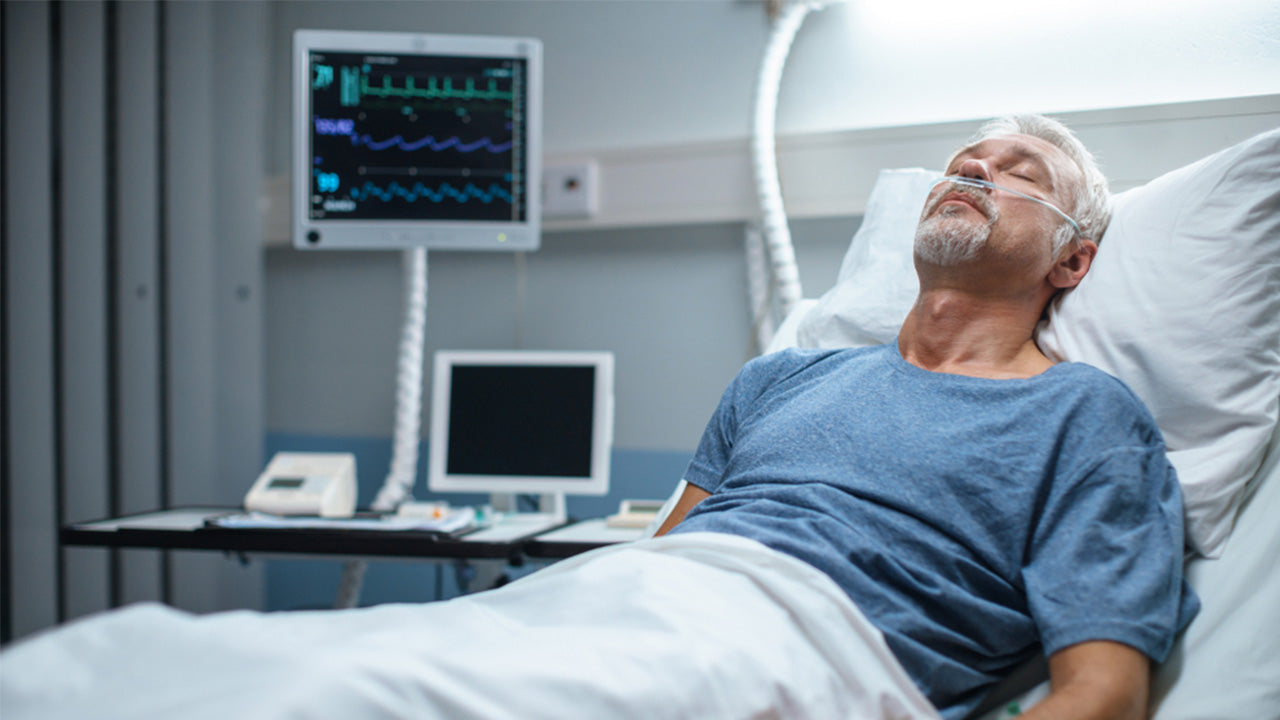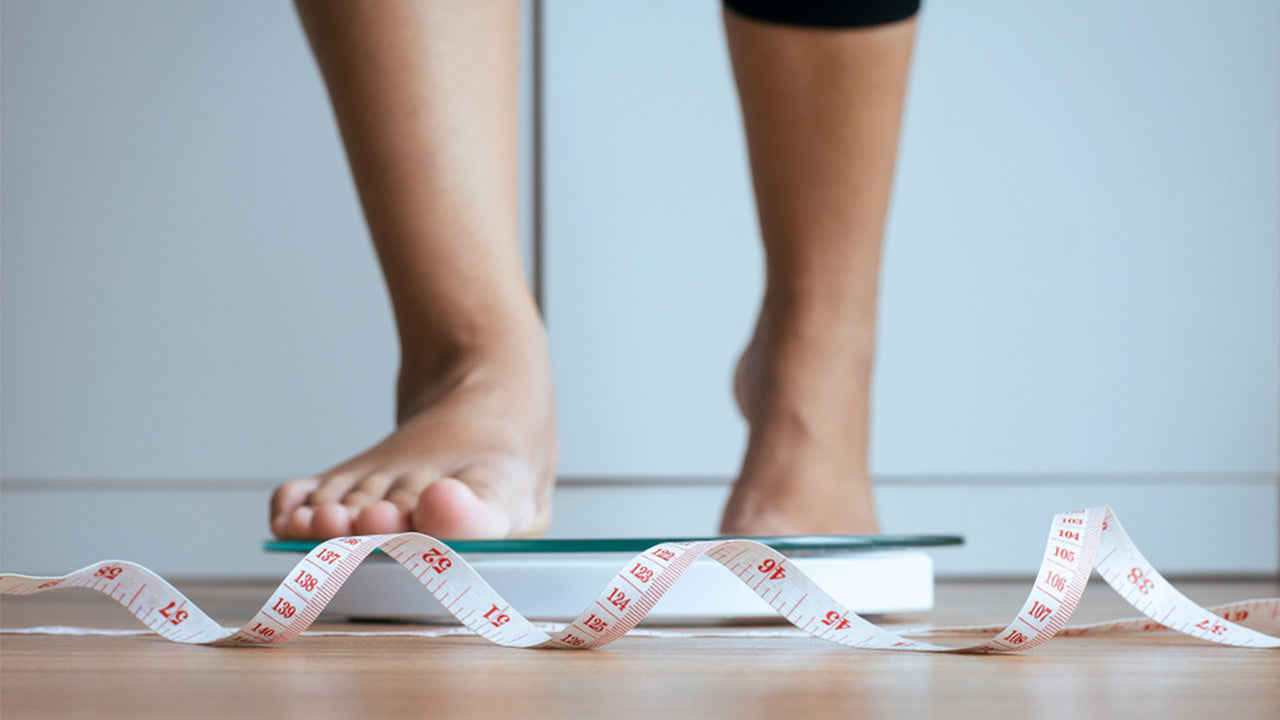The Most Detrimental Side Effect of Bed Rest? Muscle Loss
 By: by Amino Science
By: by Amino Science

If you are feeling sick, one of the first things you usually do to take care of yourself is go to bed. With more serious conditions, bed rest is almost inevitable. Sound reasoning supports this type of short-term inactivity for the purpose of facilitating recuperation, however, during bed rest, muscle loss occurs at a rapid rate, particularly among older adults.
In this article, I will explain the purpose of bed rest, why bed rest produces such pronounced muscle loss, and how to avoid that unwanted and deleterious side effect.
The Rationale Behind Bed Rest
References to the curative properties of bed rest, which has also historically been referred to as a rest-cure, can be found in some of the earliest medical writings. In the 19th century, the idea of taking to bed was a culturally acceptable method of treating both physical and mental afflictions.
Typically, bed rest refers to the prescription to remain in bed despite having the physical capacity to leave the bed, rather than being confined to bed because of a health impairment that physically prevents one from leaving it.
The practice of bed rest, particularly extended periods of bed rest and bed rest during pregnancy, has become increasingly controversial in recent decades. Some in the medical profession began to suspect that the effects of inactivity itself, and consequent muscle loss, can compound the problems caused by the pathological condition that spurred the decision to prescribe bed rest. Researchers have now compiled compelling data on the adverse side effects of physical inactivity, such as muscle atrophy.
Per a seminal 1999 systematic review published in The Lancet, bed rest should be viewed as "a potentially harmful treatment," especially when used for the management of medical conditions that do not prevent a patient from engaging in weight-bearing activity. After analyzing a number of bed rest studies—specifically, randomized controlled trials that compared bed rest to early mobilization protocols for medical conditions and procedures—that enrolled a combined total of 5,777 patients, the authors concluded that bed rest did not improve outcomes and in some cases, worsened them. The authors did note the necessity of further research to make a complete determination of the benefits and harms associated with the use of bed rest as a treatment.
At this time, many health care professionals still routinely use bed rest as part of a management plan. In an intensive care unit, virtually all patients will spend their stays in bed. In hospitals across the United States, it's common practice to enforce bed rest for elderly patients to reduce the risk of injuries and complications caused by falls. And though orthopedic surgery itself may not require bed rest, a serious orthopedic problem usually results in at least a short period of inactivity, both before surgery and during recovery.
Understanding the Effects of Inactivity
Our understanding of the effects of inactivity on muscle mass and function initially stem from the space program. Even though astronauts may be quite busy in space, the absence of gravity in effect creates a condition of inactivity. This is because on earth our actions are working against gravity, but the resistance caused by gravity is missing in the gravity-free environment of space. This results in a rapid loss of muscle mass as well as loss of strength during space flight.
Astronauts returning from the early space flights had lost so much muscle function that it was not unusual for them to have difficulty walking and carrying out other activities of daily living. There was concern that the loss of muscle mass and strength would limit the ability to perform more prolonged flights in space. Consequently, NASA began sponsoring a series of studies to identify the reasons for the muscle mass loss and whole-body muscle weakness that developed during space flights and to develop effective countermeasures.
It was not practical for researchers on earth to study the effects of weightlessness, so a model was needed. Complete bed rest causes the same kind of muscle loss and strength declines as astronauts experienced in space. The NASA program, therefore, focused on bed rest. The results of those studies have not only identified effective countermeasures to be used in space flight, but have also given us insights into the broader issue of the effects of weeks of bed rest in clinical settings.
How Bed Rest Produces Muscle Loss
Due to a reduced rate of muscle protein synthesis, bed rest causes a loss of lean body mass (particularly skeletal muscle from the lower extremities), and decreased muscle fiber function. Bed rest also induces a variety of metabolic problems, including insulin resistance and increased fat within muscle cells.
If you know about the changes in muscle mass and function that occur with aging, the responses to bed rest will sound familiar. Bed rest can be looked at as accelerated aging—all of the same aspects of deterioration of physical function that we see with aging also occur with bed rest, but at an even faster pace.
Bed rest for older patients can be particularly problematic. Older individuals lost as much muscle tissue and function in just 10 days of bed rest as younger individuals lost in 30 days, as evidenced by a study my research team and I conducted which was subsequently published in JAMA: the Journal of the American Medical Association.
Stress Compounds the Problems Caused by Bed Rest
People usually have a good reason for taking to complete bed rest. This means that in most cases, the negative consequences of a stressful condition are layered on top of the damaging effects of bed rest.
The combined effect of stress and bed rest has been examined experimentally by infusing study participants with doses of the stress hormone cortisol throughout bed rest. While stressful clinical conditions induce many responses, an increase in cortisol is common to virtually all clinical conditions.
Clinical trials have revealed that the infusion of cortisol triples the rate of muscle loss during bed rest. This indicates an interactive effect between bed rest and stress such that bed rest amplifies the catabolic response to stress.
Preventing Muscle Loss During Bed Rest
The most obvious countermeasure for inactivity is, simply, to be active. This is why patients are often encouraged to resume physical activity—typically, beginning in a supervised, physical therapy setting—as soon as possible after surgery or serious illness.
However, in many cases bed rest is not a choice, but goes along with the clinical condition. It is, therefore, necessary to look at dietary options that will amplify the beneficial effects of activity and also work in the absence of activity.
The requirement for dietary protein to curtail muscle loss during bed rest is significantly greater than when a person's activity level is normal. However, adding sufficient protein to the diet to eliminate the loss of skeletal muscle mass due to inactivity is usually impractical.
During space flight, an increase in the protein content of the diet is limited by constraints on weight and food preparation. For bed-rest-restricted patients, a loss of appetite usually accompanies the catabolic response to the clinical condition. Consequently, we need to focus on a nutritional approach that provides greater benefit per gram consumed than dietary protein does.
Using Essential Amino Acids to Curtail Muscle Loss During Bed Rest
Essential amino acids (EAAs) are the dietary amino acids that are not produced in the body but are needed for the synthesis of all proteins in the body, including muscle protein. EAAs constitute about 30-45% of dietary proteins and are the “active components” of the protein.
Consuming EAAs stimulates muscle protein synthesis. When taken daily throughout bed rest, EAAs lessen the loss of lean mass and physical strength. We discovered that the improvement in muscle strength with EAAs is in part due to an improvement in the functional capacity of the individual muscle fibers. Strikingly, the deterioration in physical function as a result of 10 days of bed rest in older individuals was completely reversed with EAA supplementation.
EAA supplementation offers a compact delivery system of the most potent stimuli of muscle protein synthesis. When taken in conjunction with exercise the effects of EAAs are amplified, but when inactivity is dictated by a clinical condition EAA supplementation still is an effective approach to minimizing the loss in muscle mass and function that would otherwise occur.
Now there is an EAA supplement available to everyone that is more than 3 times more efficient at triggering muscle growth and repair than any other protein source. It is clinically proven to help maintain healthy inflammation levels, preserve muscle mass during periods of complete inactivity, and improve physical strength and function as measured at 6 weeks post surgery. It's called Heal and you can purchase it here.
What Everyone Should Know About Bed Rest and Muscle Loss
Bed rest has been used to facilitate recuperation from illness or injury for centuries. In the modern era, however, it has become apparent that bed rest can produce unwanted side effects—namely, significant muscle loss. Despite the downside of bed rest, it remains a common feature in many health care settings.
Older adults are both particularly likely to be prescribed bed rest and particularly susceptible to the detrimental side effects of bed rest, which include changes to muscle protein synthesis and muscle fiber function as well as insulin resistance and increased fat within muscle cells. Stress aggravates the negative impact of bed rest.
When bed rest is, in fact, necessary, the best way to minimize muscle loss is to increase protein intake. Doing so through diet alone tends to be impractical, though. In a majority of cases, essential amino acids prove to be a better alternative. My own research as well as studies carried out by other experts show that essential amino acids can stimulate muscle protein synthesis and lessen the loss of lean body mass and muscle strength during bed rest.


Up to 25% off Amino
Shop NowComments (0)
Most Craveable Recipes




 833-264-6620
833-264-6620



















